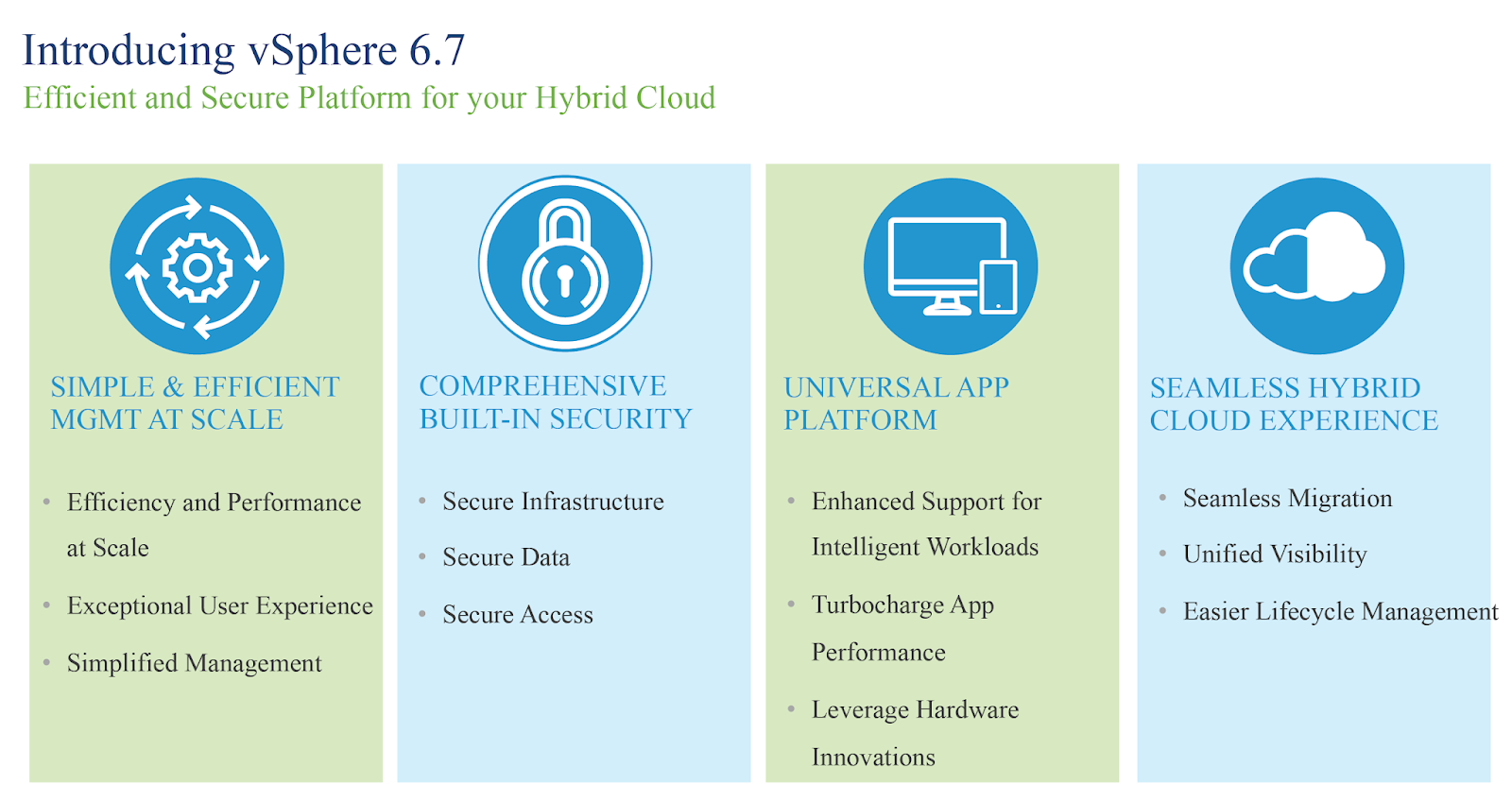Vmware Vsphere 7 Release

Today VMware unveils vSphere version 6.7, which also includes a new version of vSAN. In this post, I am going to highlight some of the big-ticket items that are in vSphere 6.7 from a core storage perspective, and also some of the new feature that you will find in vSAN 6.7.

Vmware Vsphere 6.7
The highly anticipated vSphere 6.7 Update has officially GA'ed! Below is an aggregation of all the related release notes and downloads for this vSphere release. I have also created a short URL which you can use to access this exact same page using vmwa.re/vsphere67u1. The downloads are currently being staged, so please be patient. On April 21, 2009, VMware announced vSphere 4, instead of VI 4, releasing it on May 21, 2009. On November 19, 2009, VMware released Update 1 for vSphere 4, adding support for Windows 7 and Windows Server 2008 R2. VMware is using vSphere in the cloud computing platform for virtualization. VMware's vSphere 4.1 began shipping in August 2010. Enhanced VMware vSphere Client: This latest release of the HTML-5-based vSphere Client will introduce new functionality to manage VMware NSX, vSAN and vSphere Update Manager along with an increased support for third-party products. For open source components, list of disallowed or unsupported CPUs, and product support notices see the VMware vSphere 6.7 Release Notes. Patches Contained in This Release This release of vCenter Server 6.7 Update 1 delivers the following patches.
I’ll also cover some of the new enhancements coming in Virtual Volumes (VVols). VSphere 6.7 Core Storage features HTML 5 Client We have now ported all of our storage workflows to the new H5 client. This is true for vSphere core storage, vSAN, VVols, SPBM, etc.
So I would strongly recommend switching over to the new H5 client and familiarizing yourself with it as much as possible. Even in this 6.7 release, there are certain workflows that are only available in the H5 client, and going forward, this will be the only client that will support new functionality. New Limit Increases Let’s begin by discussing the increase in limits for devices and paths.
In vSphere 6.5, we increased the number of device paths from 1024 to 2000 per ESXi host. We also increased the number of devices from 256 devices per host to 512 devices per hosts (not via the same target, but via multiple targets). In vSphere 6.7, we are increasing these limits once again. We are now going to support 4096 paths per ESXi host and bump the number of devices supported per host from 512 to 1024. 4K Native Device Support There is now support for 4K native devices (4KN).
Vmware Vsphere 7 Release Date
These are devices that use a 4KB sector size rather than the traditional 512 byte sector size. The advantage of course is that we can now have much larger capacity disk devices on vSphere. In vSphere 6.5 we introduced VMFS-6. This new version of VMFS-6 is already designed to handle these new sector sizes. But what about your legacy applications running in the Guest OS? Can these handle 4K sectors? You may also remember that in vSphere 6.5, we announced support for 512e devices.